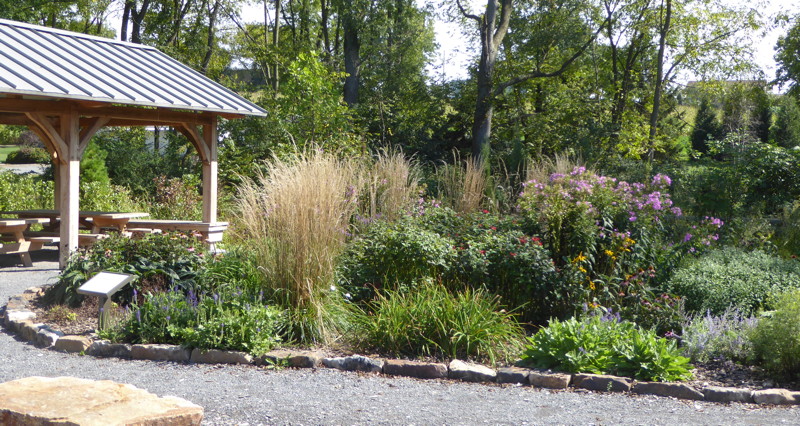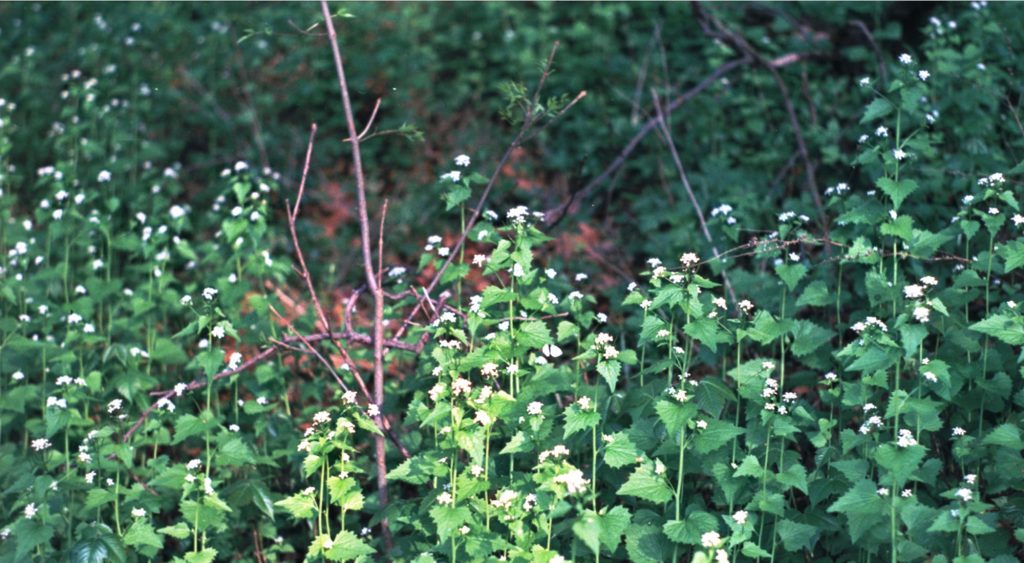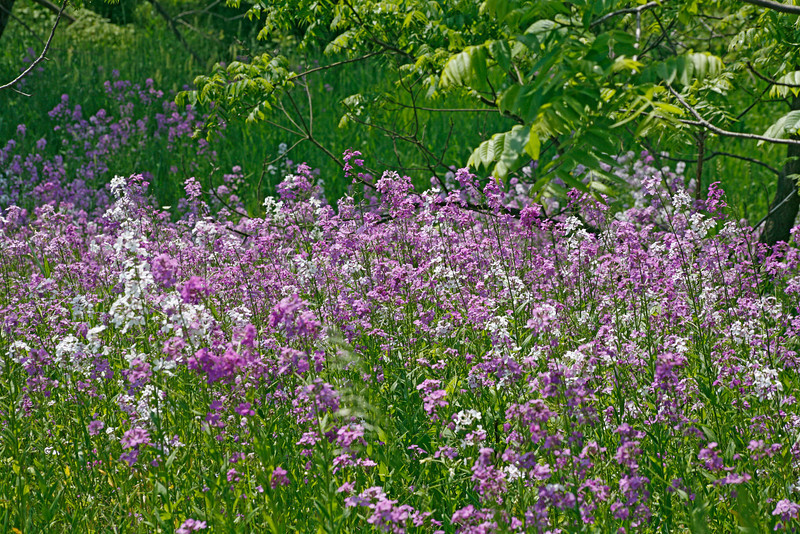This post was written in fall 2019 and has been updated.

I'm not really much of a gardener. I grew up in a house with a full complement of brown thumbs. Now I do live with a gardener, but we also have division of labor in the house. I'm not so good at remembering to keep plants alive, but I am quite good at killing them, i.e. weeding.
And it turns out there are lots of places to ply my trade. The obvious ones might be in our vegetable garden. Or in other parts of our yard. Less obvious are the public spaces that have crept into my weeding repitoire:
- the Lewisburg Community Garden (Tues/Thurs, from 4 to 7pm), sign up each week to help out here,
- the Judy Anderson Memorial Garden at the Vicksburg trailhead of the Buffalo Valley Rail Trail (email jpuufinfo [at] gmail [dot] com for the next date),
- Lewisburg Landing and Mariah's Garden (Mondays, 7pm),
- the Bucknell Farm (W, from 4 to 7pm, and Saturdays, times vary), sign up in advance to participate here, and
- tree wells on Market Street (stay tuned for the next date).
Who knew the opportunities to weed were so plentiful and so forgiving? All these public sites welcome the casual weeder (most of them are once again doing so or may have carried on with open opportunities through the pandemic). If you enjoy yanking out weeds, consider any of them as possible targets for your energy.

Now, it is good to familiarize yourself with what is in need of weeding. Some things are more obviously weeds than others. E.g. the Japanese Knotweed that was introduced to our area as an ornamental in people's gardens, but has instead taken over much of our untended areas, suppressing the natural regrowth of trees by shading out young saplings. Or Tree of Heaven, especially now that it is an attractive host plant for the ultra-invasive/destructive spotted lanternfly. Or garlic mustard which does not seem to have many redeeming qualities (beyond being clearly definable as an invasive species!). Or Japanese Stiltgrass also doing its part to smother and otherwise harm native vegetation and ecosystems.

But you can also get insight into what's approved for attack by attending work sessions in some of these sites. The Community Garden has Volunteer Hours each Tuesday and Thursday from 4 to 7pm. Lewisburg Landing hosts Green Team Work Sessions each Thursday (weather permitting) at 7pm. Mariah's Garden and the Rail Trail Memorial Garden both have intermittent work parties.
Going to a work session can give you valuable insight into the garden ethos of a given location. For example, a plant in the less obvious category (of weed or not-weed) might be Phlox, which while you might actually want it in one place, has a tendency to range far beyond its allotted area. The Memorial Garden in Vicksburg is a great place to look for straying Phlox and rein it in, leaving it in one or two clumps, rather than invading all other zones.

In the more ambiguous category as well would be the lowly dandelion. On the one hand, they are not very highly prized by lawn enthusiasts, but they do offer an early pollen option which is very helpful to our beleaguered pollinator population. They also happen to be edible -- I only wish as much could be said for Japanese Knotweed, but alas it doesn't appear that even goats like to eat that...
Burdock -- consider it situationally. If it's right where all those massive burrs are in prime position to get stuck in every passing dog's fur, then, maybe hack it down. Otherwise, in a background location, it's native... just live and let live.
And how does one go about the weeding anyway? Well, most of the time that means pulling them up by the roots. One exception to that is Japanese Knotweed which does such a good job of smothering other growth that it would leave its sites bare and exposed to massive erosion if the roots were removed. In that case, the recommendation is to keep cutting off as much of the plant above ground as possible, in essence starving it of photosynthesis. Even that is tricky though because the plant is one of those that can form roots and resprout from almost any segment left in contact with soil, as long as there's a node or joint of the stem present. This has led to bans on mowing it in other states, because that only succeeds in spreading it mightily. So Knotweed may require some other tools, like clippers or a hoe. Many other weeds can be tackled with just gloves or maybe a simple weeding tool (a single prong of metal with a handle) to allow you to get at the roots more easily.
Do you have any least favorite plants or most favorite public sites to do a little garden helping?

